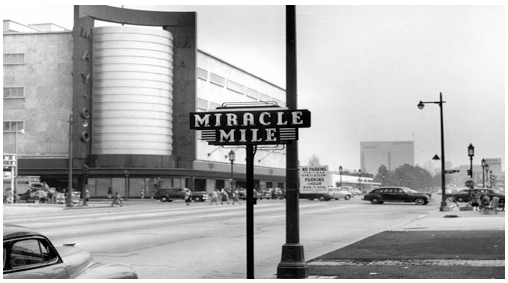CommentsFIRST PERSON ACCOUNT--When I was a twelve-year-old kid in Northridge, some agitated neighbors came by to talk to my folks about "the negroes that wanted to move into the neighborhood." They wanted all the lily-white and predominantly gentile neighbors to get together and buy the house to get it off the market, thinking this would stop African Americans from moving in.
My father, who was from Chicago and had suffered from anti-Semitism in his youth, wanted no part of this. He could have forgotten about being ostracized in the past, like other Jewish, Irish and Catholic neighbors; he could have gone along with the illusion of assimilated acceptance of our family in the neighborhood, as other neighbors seemed willing to do. But he did not. I was never so proud of my father than at that moment.
Later in life in 1987, shortly after I got married, we found one of the only houses we could afford in the Los Angeles Miracle Mile neighborhood just adjacent to the predominantly Jewish Beverly-Fairfax neighborhood where I had once lived (photo above) until I was 10 years old and moved with my upwardly mobile family to Northridge in the San Fernando Valley.
I subsequently learned that this part of the Miracle Mile was had been “still affordable” because it, too, was in "transition." It was the latest "frontier" for a practice I later learned was called "block busting" – a process by which unscrupulous real estate speculators would move a Black family into a White neighborhood to scare the Whites into panic selling. This would predictably cause the bottom to fall out of the local real estate market.
Up until the U.S. Supreme Court decided the case of Shelley v. Kraemer, 334 U.S. 1 (1948), discrimination in housing was perfectly legal. Racially restrictive covenants were commonly found in virtually all house deeds and were enforced by the courts against any minority who dared try to move into these neighborhoods. Until the Shelley case was decided, this de jure segregation kept Latinos bottled up in five segregated barrios in LA and kept Black folks living along Central Avenue -- the only neighborhoods in Los Angeles where they could legally reside.
After Shelley v. Kraemer, “blockbusting” worked by causing a stampede of panicked Whites selling at increasingly deflated market prices until the bottom fell out of the market. The unscrupulous real estate people would then buy the houses on the cheap, and immediately turn around and sell them to upwardly mobile Black doctors, lawyers, and professionals at highly inflated prices. This is how these morally challenged real estate folks could make obscene profits.
Not only did the Whites get screwed when they sold, but upwardly mobile Black professionals, like the ones who now live in the once white Crenshaw neighborhood just north of the Santa Monica Freeway, found themselves again living in a predominantly Black neighborhood. Their very presence caused more White-flight.
What makes me proud of my neighborhood in the Miracle Mile is that none of my neighbors were stampeded into selling when blockbusting was tried on us. This has contributed to the still atypically integrated character of my neighborhood which has looked like the true diversity of LA ever since. In recent years, this integration has been augmented by the addition of gay couples, whose neighbors are more concerned with how much water they use than who they love. The jury is still out on how well the rising orthodox Jewish population moving into the neighborhood will fit in. But I'm optimistic.
For years, my Miracle Mile neighborhood, with its bigger houses and lots, saw property values being kept artificially lower than Beverly Hills-adjacent Carthy Circle. Was this payback from the angry real estate interests that got screwed when blockbusting turned out to be a bust for them in the Miracle Mile?
More recently, the Miracle Mile has been booming with its New York style high-rise development of apartments, condos, and businesses (as per the master plan for Wilshire Boulevard,) along with the construction of the subway that is inching its way from Western to La Brea (to the delight of several-hours-a-day commuters.) Property values are skyrocketing.
Even during the recent recession -- when housing in other areas declined so much that homes were no longer equal to the value of their mortgages, causing foreclosure -- the Miracle Mile was either flat or continued to grow. Now, houses are now worth as much as 10 times what they cost in 1987.
I guess the takeaways for me are two-fold: Human greed is ultimately stronger than racism. I know that my father would be proud of me and my neighbors for not knuckling under.
(Leonard Isenberg is a Los Angeles observer and a contributor to CityWatch. He was a second generation teacher at LAUSD and blogs at perdaily.com. Leonard can be reached at [email protected]) Edited for CityWatch by Linda Abrams.














